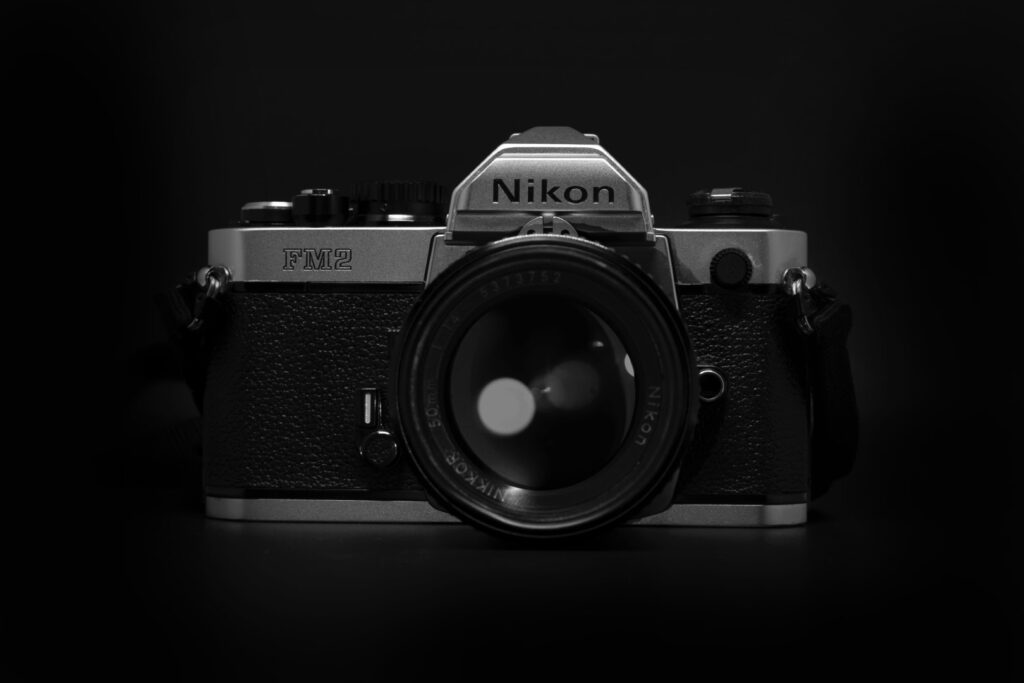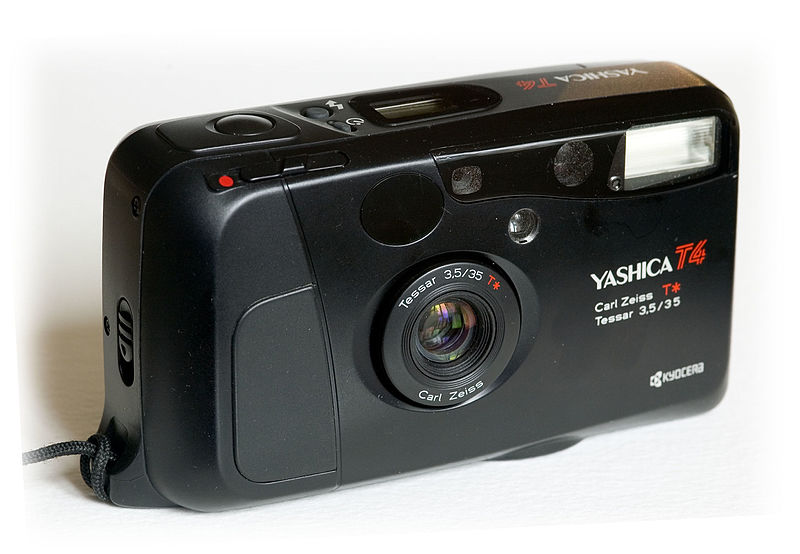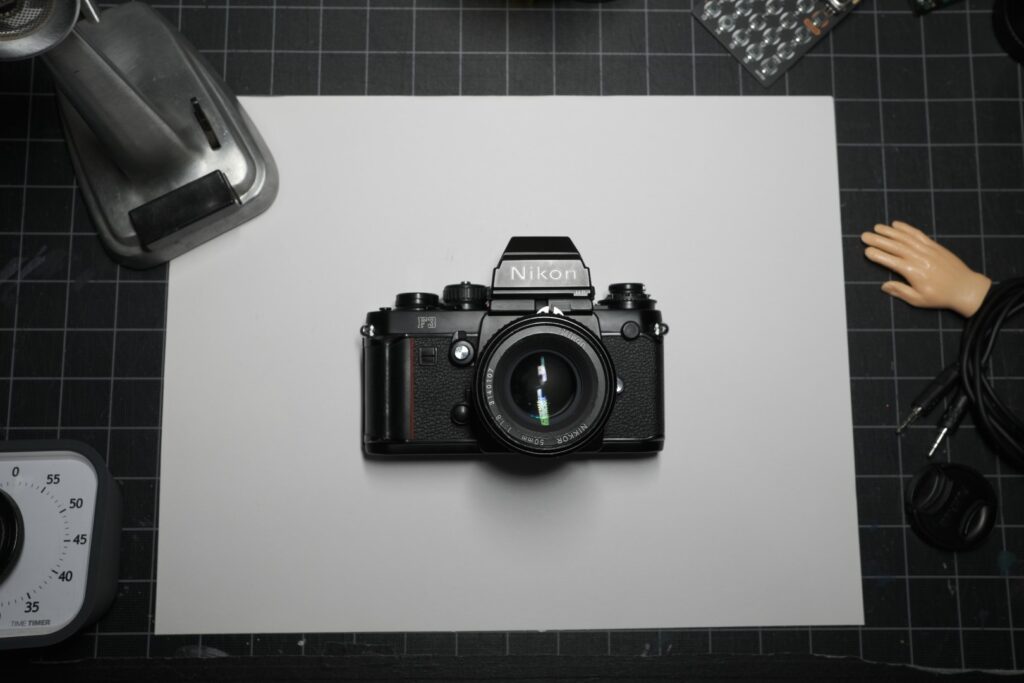Navigating the world of vintage film cameras can be a daunting task, especially when it comes to finding the appropriate battery. If you’re wondering about the Nikon FM2’s battery requirements, this article has got you covered. The Nikon FM2 can use either two LR44 alkaline batteries or two SR44 silver-oxide batteries it is also possible to use a single CR1/3N 3V lithium battery. While they’re readily available on Amazon, you can also find them in local stores such as Walmart or specialized photography stores like B&H photo.
Does the Nikon FM2 require batteries?
The Nikon FM2, unlike many other film cameras, does not rely entirely on batteries for its operation. The FM2’s entirely mechanical shutter is capable of functioning across its full range of shutter speeds – from 1 second to 1/4000 of a second, plus Bulb mode – even without a battery. This feature of the Nikon FM2 comes with a number of benefits, particularly for those who love the adventure and unpredictability that comes with shooting on film. For starters, you won’t be caught off guard with a dead battery. Whether you’re out in the wilderness, traveling overseas, or simply in the middle of a shoot and your battery dies, the FM2 will keep on going, allowing you to capture your vision without interruption.
Not being dependent on a battery also gives you the freedom to shoot in extremely cold environments where battery performance typically drops. You can brave the frosty landscapes for that perfect shot without having to worry about preserving battery life.However, it’s important to note that while the mechanical shutter doesn’t need a battery, the FM2’s built-in light meter does. The light meter is a crucial tool for judging exposure correctly, especially for beginners or in challenging light situations. Without a battery, you’ll need to rely on external methods to judge exposure.
In such situations, the Sunny 16 rule can be your guide. This rule is a method of estimating correct daylight exposures without a light meter. For a detailed explanation and guidance on how to use the Sunny 16 rule, refer to our comprehensive article on the topic.

What batteries should you use for your Nikon FM2?
Choosing the right battery for your Nikon FM2 is crucial to ensuring the optimal performance of your camera’s light meter. There are three main types of batteries that you can use: the 4LR44 alkaline battery, the 4SR44 silver-oxide battery, and the 3V CR1/3N lithium battery.
4LR44 Alkaline Battery
4LR44 alkaline batteries are easily accessible and relatively affordable. These batteries can be found at most general electronics or photography equipment stores, making them a convenient option. However, they have a gradual discharge curve, meaning that the voltage they provide slowly declines over their lifespan. This can potentially lead to inaccuracies in the light meter’s readings over time as the battery loses its power.
4SR44 Silver-Oxide Battery
Silver-oxide batteries, such as the 4SR44, offer several advantages over their alkaline counterparts. They have a flatter discharge curve, meaning that they maintain a consistent voltage output over their entire lifespan. This results in more accurate and consistent readings from your light meter throughout the life of the battery.
In addition, silver-oxide batteries typically have a longer lifespan compared to alkaline batteries, meaning you won’t have to replace them as often. While these batteries may be slightly more expensive and harder to find than alkaline batteries, the consistent performance and longer life often make them a worthwhile investment for serious photographers.
3V CR1/3N Lithium Battery
Lastly, the 3V CR1/3N lithium battery is another option for the Nikon FM2. These batteries also have a flat discharge curve, ensuring consistent light meter readings. They are known for their long life and ability to perform well in a wide range of temperatures, making them a reliable option for photographers who shoot in various environments.
However, while lithium batteries generally offer superior performance, it’s worth noting that they can be more expensive and may be harder to find locally than alkaline or silver-oxide batteries. There are also environmental considerations to bear in mind, as lithium batteries are more difficult to recycle than other types.
When choosing a battery, consider your photography needs, budget, and access to replacements. While each type of battery has its pros and cons, using a high-quality battery can help ensure you’re getting the most out of your Nikon FM2.
Where can you get a Battery for the Nikon FM2?

Finding the right battery for your Nikon FM2 is fairly straightforward, thanks to the widespread availability of the required battery types. Whether you prefer shopping online or at a brick-and-mortar store, you have several options at your disposal.
Online marketplaces such as Amazon offer a vast selection and competitive prices. These platforms often deliver quickly, making it convenient to have batteries delivered right to your doorstep.
Physical retailers are another option, especially if you need a battery urgently. Electronics stores, photography supply stores, and even large supermarket chains often carry the types of batteries compatible with the Nikon FM2.
For a detailed understanding, let’s break down the types of batteries and the brands commonly associated with them:
| Battery Type | Most Common (Recommended) | Other Common Names |
|---|---|---|
| Silver Oxide (4SR44) | (SR44) Duracell 303/357/76 | EPX76, SR44W, 357 |
| Alkaline (4LR44) | (LR44) Duracell 76 A | A544, 4A76, GP476 |
| Lithium (3V CR1/3N) | (CR11108) Duracell DL1/3N | CR1/3N, 2L76BP, DL1/3N |
Keep in mind that different manufacturers sometimes use different names for the same type of battery. Therefore, having a list of common names can be useful when you’re shopping around. While all three types of batteries can be used with the Nikon FM2, remember that each offers unique advantages, as discussed in the previous section.
How long does the Nikon FM2 Battery last?
The longevity of your Nikon FM2’s battery can depend on several factors, including the type of battery you’re using and how often you use your camera.
According to Nikon’s specifications, a silver-oxide (4SR44) battery should last approximately one year under normal usage. Alkaline (4LR44) batteries tend to have a similar lifespan. The 3V CR1/3N lithium battery, with its long life and stable performance, may last even longer.
However, many Nikon FM2 users have reported that their batteries last significantly longer than the estimated one-year lifespan. It’s not uncommon to hear reports of batteries lasting for up to three years, especially if the camera is not heavily used or is frequently switched off when not in use. This is yet another benefit of the Nikon FM2’s manual nature, as it consumes less power compared to more automated cameras.
Regardless of the battery type, it’s always a good practice to have spare batteries at hand. This ensures that you’re always ready to capture those perfect moments, and helps avoid any disappointments due to an unexpectedly depleted battery. Remember, given the Nikon FM2’s mechanical nature, even if your battery does run out, you can continue shooting manually following the Sunny 16 rule.
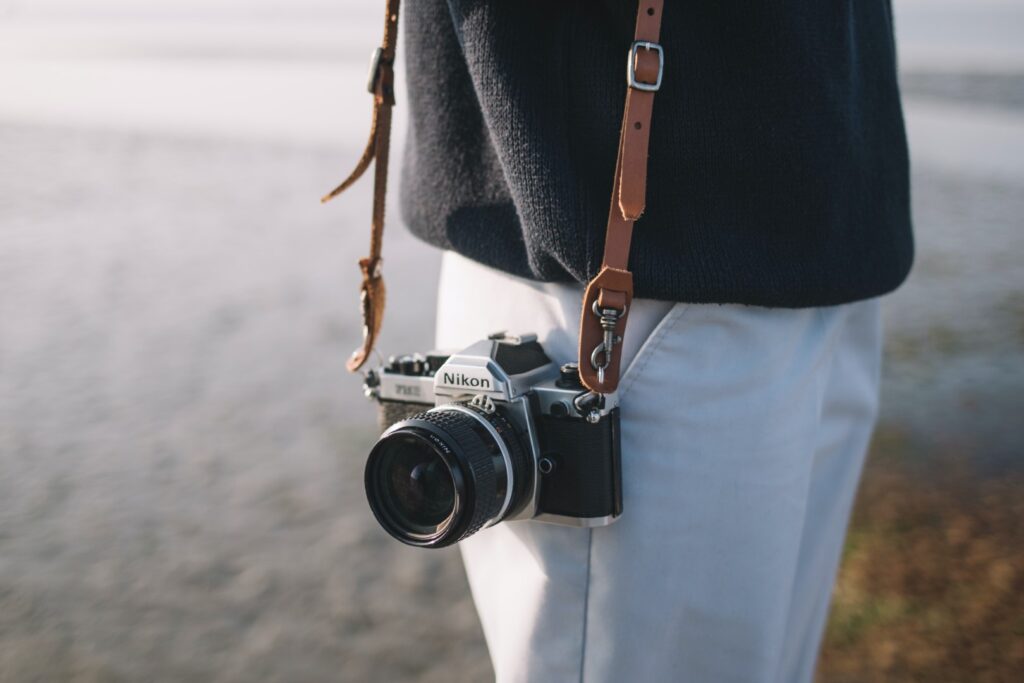
How do I change the batteries in my Nikon FM2?
Changing the batteries in your Nikon FM2 is straightforward:
Step 1 – Remove the battery chamber lid: The battery compartment is on the bottom of the camera. You’ll need a small coin or a similar object to turn the lid counterclockwise and open it.

Step 2 – Insert your batteries: Be sure to insert the batteries correctly. The ‘+’ sign should be facing upwards.

Step 3 – Close the battery chamber lid: Screw the lid back on, and you’re ready to go. Next you should check your battery, read on to find out how.
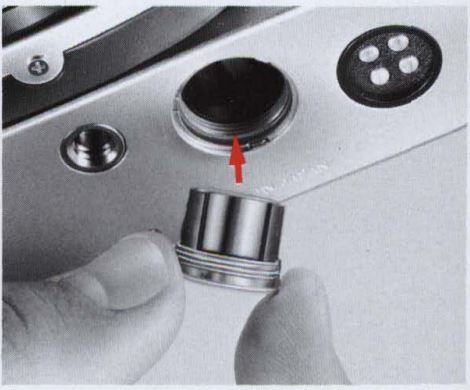
How do I check the battery on my Nikon FM2?
Monitoring the battery power on your Nikon FM2 is simple and straightforward, thanks to the thoughtful design of this classic film camera. Here are the steps you need to follow, as per the official Nikon FM2 manual:
Pull out the film advance lever: The film advance lever serves a dual purpose – it also acts as a lock for the shutter release button. To unlock the shutter release, gently pull out the film advance lever. This action will shift the lever from the flush to the standoff position.

Press the shutter release button lightly: This simple action switches on the exposure meter. The meter stays on for approximately 30 seconds after you’ve released the button.

Check battery power: To perform a battery check, switch on the exposure meter while looking through the viewfinder. If one or both of the red LED exposure indicator lamps inside the viewfinder light up, your battery is in normal condition. This means it is providing adequate power.

Please note, if the shutter speed dial is set to B (bulb), the exposure indicator lamps won’t light up. Make sure to set the dial to another position when checking battery power. If no exposure indicator lamps light up, there might be an issue with the battery – either it’s installed improperly or its power is insufficient. If the battery is improperly installed, adjust its positioning as needed. If the power is not sufficient, replace the battery to continue shooting.
By regularly checking the battery on your Nikon FM2, you can ensure that your camera is always ready to capture those perfect moments. It’s also a good practice to keep a spare battery at hand for those instances when the current battery suddenly runs out. Given the simplicity of checking battery power in Nikon FM2, you can do it on the go and keep shooting with confidence.
Understanding Battery Consumption on the Nikon FM2 (and other intriguing facts)
While the Nikon FM2 is an efficient camera, there may be instances when you may experience rapid battery drain. It’s essential to understand some fundamental factors to avoid these situations and ensure that your camera’s performance remains optimal.
Temperature Impact on Battery Power
Extreme cold temperatures can affect battery performance. The battery power can decline and possibly lead to malfunction in the camera’s photometric circuit. In this situation, use new batteries and protect the camera body from the cold. It’s also interesting to note that battery power will be recovered as soon as the temperature returns to normal.
Anti-Cold Battery Pack DB-2
In very cold weather, consider using the Anti-Cold Battery Pack DB-2 as an alternative power supply to the batteries inside the camera body. This pack accepts two M-type batteries. Just connect the DB-2 to the camera body and then slip the assembly inside your pocket or coat to keep it warm. This measure assures that the camera’s metering system will function even in very cold temperatures.
Precautions with Battery Usage
It’s important to handle batteries responsibly. Always keep batteries away from infants and small children, and in case a battery is accidentally swallowed, consult a doctor immediately. Also, never disassemble batteries or discard them in fire.
Battery Leakage
If the battery is left in the battery chamber for an extended period, battery leakage might occur, leading to insufficient contact. It’s a good practice to periodically clean the battery and the contact section in the battery chamber with a soft cloth. If the battery chamber is stained with a leaking battery, remove the battery immediately and clean the chamber.
Battery Replacement
If you’re using a pair of batteries, always change them at the same time; never mix new and old batteries. When using a pair of batteries, make sure they are of the same make.
Battery Storage
If you’re not using the camera for a long period, remove the batteries and store them in a cool, dry place.
Battery Lifespan and Spare Batteries
The battery’s lifespan in normal use is about one year. However, the battery that comes with this camera is for test purposes only, so its lifespan may be shorter than usual. Always check battery power before the shooting session because battery power can become exhausted without warning. It’s a good idea to have spare batteries on hand during a protracted shooting assignment.
By understanding these key facts about battery usage in Nikon FM2, you can take the right steps to ensure prolonged battery life and, in turn, enjoy seamless photography.

